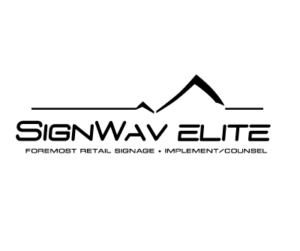Today, there is a significant increase in the number of commercial buildings that are being constructed or remodeled across the country. Accommodating this rapid growth requires a sophisticated level of technology integration that goes beyond brick-and-mortar construction to the design and installation of networking, communications, electronic record-keeping and patient/staff security systems.
As a result, the construction industry is increasingly turning to single source technology integrators during the earliest phases of building that can design, install and manage an integrated package of systems while coordinating with other more traditional aspects of construction.
Integration, defined on dictionary.com as “an act or instance of combining into an integral whole,” can be a somewhat vague concept because the combination of parts can be unending, while each individual solution is specific to the application.
What is known is that the best integrators are those that have an extensive knowledge of the available products and component parts of any system and are able to connect them together in a manner that extracts significant added value. In other words, the “whole” [a properly integrated system] should be much greater than the sum of its parts.
Technology integrators should bear the cost of providing an initial assessment of their needs. The bid should itemize the costs for equipment and support.
With new construction booming, “integration” also has taken on new meanings. To start, technology integration in new construction now encompasses an array of options from network IT and Wi-Fi access points, to access control systems, physical security cameras, alarms, VoIP phones, and environmental and temperature monitoring, to name a few.
Then there is integration of effort and coordination with other aspects of new construction when installing such systems.
Technology integration, it turns out, is not completely covered under the umbrella of the general contractor. That means technology integrators, often hired by building owners, must coordinate and integrate their efforts with the general contractor and associated plumbers, electricians, drywall installers, painters and other tradesmen in a side-by-side effort.
In addition, technology integrators often coordinate with company personnel tasked with overseeing specific aspects of the installation, whether environmental control managers, IT staff or physical security experts.
In short, any integration—if not properly coordinated, scheduled and executed with accommodations for last minute changes, etc.—can be a nightmare for those responsible for managing the overall effort and all the contractors.
To avoid this scenario, organizations are turning to single source companies that not only can handle the full array of technologies, but can do so down to the installation of the low voltage wiring, cabling, conduit trays, wireless antennas, hubs, electronic equipment racks and even the locks on the exit doors.
By working with a single source technology provider that offers a menu of technology offerings, there is an advantage of having a single point of contact for overall system design, installation, management and support.
This can save organizations significant time and money in technology consultation, along with saving “a lot of aggravation and headaches” related to managing construction staff.
Evolving technology integration
Traditionally, voice, data, network and physical security system purchases have been made independently. Security cameras and access control systems, for example, are implemented by security integrators, while VoIP phone systems are installed by telecom providers. In this approach, each vendor offers a proprietary solution with little consideration as to how it will be converged with other aspects of the network.
While technology integrators sound like a high-end service with a commensurate price tag, that is not the case.
But integration of these applications during new construction or remodeling can offer immediate significant revenue, security and savings to an organization’s bottom line.
If you go to a traditional vendor in commercial security, VoIP or even IT, they may try to interest you in products that are currently promoted. It might not end up being a fully operational solution to the business problem they are attempting to solve. Some vendors may not comprehend the full integration potential and so are not able to go the extra mile to deliver advanced functional capabilities that are built into the system.
As an example, an access control system can be integrated with the HR database to coordinate changes in employee status such as termination, to automatically activate or deactivate an employee keycard. If that same employee has remote access to the security cameras, the network can disable the account immediately.
Managing costs
While technology integrators sound like a high-end service with a commensurate price tag, that is not the case. An integrated approach to IT with the best-of-breed solutions on the market delivers economies of efficiency and scale that are often passed on to the customer.
When engaging with a managed IT service provider, Brackett says it is also important that customers know what they are paying for with contracts that clearly spell out each installed product, feature, and support item or service they are purchasing.
Technology integrators should bear the cost of providing an initial assessment of their needs. The bid should itemize the costs for equipment and support. The vendor should anticipate future upgrade paths in order to provide transparency to future expenses. In this way, a customer knows their initial, ongoing and upgrade costs and can budget accordingly.
“Pricing transparency was a big factor in our telecom system purchase decision,” says Brett Stephen, Director of Information Systems at Heart Care Centers of Illinois, a five-center network of cardiovascular clinics, which selected BTI as its telecom partner. “In 14 years of supporting our telecom needs, we have not once been surprised by pricing even as we have upgraded features and added reporting tools.”
Ongoing IT management & support
It also is important to note that the role of the technology integrator does not end once the system is installed. Proactive monitoring should be employed, so that the system actively oversees technology performance to identify anomalies even before a malfunction occurs. Problems are addressed often without the customer even knowing about it. When site visits are required, the monitoring system dispatches an engineer without interrupting the customer.
“Our 24-hour monitoring system sends me alarms by email, text and phone. I am always in the know whether I am at work or remote, and I only have to deal with one vendor,” says Charles Lomboy, Director of Physical Plant Management at Los Angeles-based AltaMed, a 46-site health clinic network that serves nearly 1 million patient visits annually. The company uses BTI networks for CCTV, access control and burglar alarms.
With a proactive model, far fewer IT resources are used. This minimizes the impact on daily operations and enables an IT department to focus on the core business rather than babysitting systems for lower level network needs.
Eric Brackett is President of BTI Communications Group, a technology convergence provider that serves the food, logistics, healthcare and aerospace sectors. The company acts as a single source provider of physical security, access control, network, and complex phone (VoIP) systems, down to installation of wiring and conduit.
































